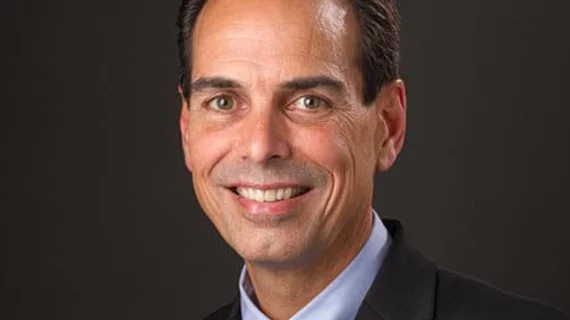HFMA 2017: How Yale New Haven Health found ‘improved quality means improved margin’
The shift from volume to value isn’t an easy transition for healthcare, but data can make all the difference, especially for a large system which often takes in complex patients from other facilities, which was the case for Yale New Haven Health System.
Stephen Allegretto, CPA, MPH, Yale New Haven’s vice president of strategic analytics and financial planning, will discuss how the $4.4 billion, four-hospital, 25,000-employee system has addressed the shift in to quality-based Medicare payments while dealing with significant clinical variation in a presentation at the Healthcare Financial Management Association’s Annual National Institute (HFMA ANI) conference in Orlando on June 27.
“We came up with what we’ve called our breakthrough, which is understanding quality outcomes for every patient we serve. It’s called quality variation indicators,” Allegretto told HealthExec. “Things that happen to patients when they’re in our care that we would like to prevent, thing like blood clots or deep vein thrombosis or respiratory complications. By being able to provide that information to clinicians, it has allowed us to measure that improvement. One of the new notions that we’ve used is improved quality means improved margin and that’s true across every payor.”
One of the challenges to Yale New Haven’s transition is its complex patient population. With the system including a level 1 trauma center, Allegretto said it receives “a lot of transfers” for complex cases and procedures like cardiac access vascular graft (CAVG). Those patients were more likely to experience complications and to be readmitted at a rate above the national average, which resulted in penalties from Medicare.
Because of the system’s quality variation indicators, however, it was able to figure out the transfer cases were the cause of these poor outcomes. The solution was to have an interprofessional care team, including a cardiothoracic surgeon, interventional cardiologist and nurses, to evaluate those complex cases. It sounds simple, Allegretto admitted, but it’s something few organizations are doing.
“It’s this learning journey that’s allowed us to understand that,” he said, “and it was data that allowed to understand exactly what was contributing to our outcomes lower than (the national average.”
Coming from the financial side of the system, Allegretto said he “hasn’t had to convince anyone on anything” among the clinical staff when it comes to these initiatives. The key to their willingness to participate has been to lead with the quality data on a patient, not the cost data like a patient profit and loss statement.
Allegretto readily admits value-based payment is still in its infancy for his system, accounting for only 3 to 5 percent of its total revenue. Barriers remain, from understanding the clinical variation to rewarding clinicians after they’ve been engaged, though Yale New Haven has to been able to figure out an incentive systems in certain models, like having physicians share in the savings from a bundled payment program.
Other systems, however, may not be ready for this kind of transition to value, which he said will take decades to implement, comparing it to the introduction of diagnosis-related group (DRG) reimbursement beginning in the 1970s.
“If we focus on patients and we focus on the outcomes and the data that we have, we can keep this simple and we can get paid in an appropriate way for providing good quality of care,” Allegretto said.

